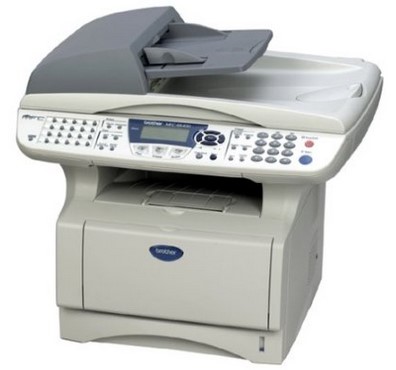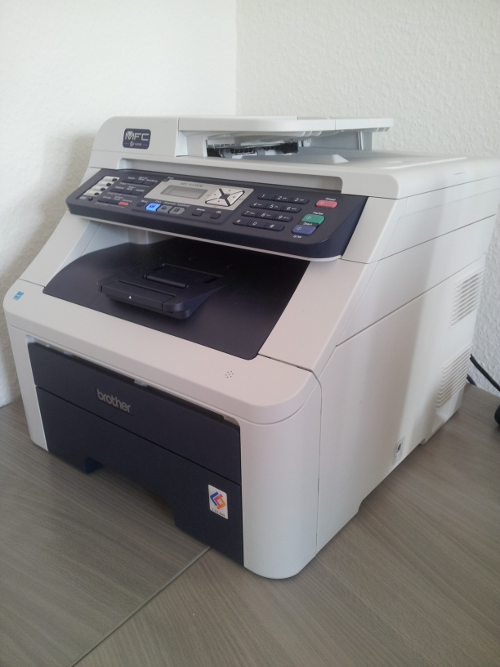
I'm new to Ubuntu having just migrated from windows XP. Following other threads I downloaded drivers for DCP-J140W but can only get it to work via USB cable.
It combines printing, copying, scanning and faxing into one powerful space-saving. A top-loading design makes it easy to install and replace toner cartridges. Windows 10 Compatibility If you upgrade from Windows 7 or Windows 8.1 to Windows 10, some features of the installed drivers and software may not work correctly.

It works wirelessly with a Windows PC but not with my Ubuntu laptop. Coming from Windows I'm struggling with the Xterm command line stuff needed for installing downloaded stuff so helpful replies will need this detail please. So how far have you progressed?. Did you download the.gz file using the link supplied in Post #1?. If so, were you able to extract it, and successfully execute the commands listed?. Using the Terminal is a super convenient method of getting things done quickly, invest the effort to learn how to use, you won't be sorry, and it's second nature after a few goes at it.
Good luck, and you came to the right place by the way to learn ubuntu! Hi Guys, Thanks for that info. I have now got it working. I think that at my previous attempt I didn't know the device URI so responded to the prompt with No and therefore got the USB type installation.
Forgot to ask in last post but Can I delete the files downloaded to the.Downloads directory now that my installation is complete? I assume that all downloaded files with regard to program/driver installation are moved to appropriate directories associated with the application. I did notice however that there are uninstall files in my.Download directory. It seems logical to me that the.Downloads directory should only ever be a temporary location used during download and installation. Last edited by howefield; October 26th, 2016 at 05:34 PM. Reason: posts combined.
Forgot to ask in last post but Can I delete the files downloaded to the.Downloads directory now that my installation is complete? I assume that all downloaded files with regard to program/driver installation are moved to appropriate directories associated with the application. I did notice however that there are uninstall files in my.Download directory. It seems logical to me that the.Downloads directory should only ever be a temporary location used during download and installation.Great, glad you've got it working. Not intending to be too picky, but there is no.Downloads directory as far as I know. Directory names that start with a. Are hidden directories.
They can be viewed in 'Files' by hitting Ctrl-H, (see 'View' in Files Menu). To remove unneeded files, you can use the 'autoremove' command. Two lines of useful Terminal code. One of the essential functionalities of apt-get (which was initially specific to aptitude) is the tracking of packages installed only through dependencies. These packages are called “automatic”, and often include libraries for instance. With this information, when packages are removed, the package managers can compute a list of automatic packages that are no longer needed (because there's no “manually installed” packages depending on them). Apt-get autoremove will get rid of those packages.
Aptitude does not have this command because it removes them automatically as soon as they are identified. Both programs include a clear message listing the affected packages. Last edited by vasa1; October 16th, 2014 at 01:50 PM.
Thanks vasa1 for the excellent explanation. I'll make a note of that command for future reference. On the subject of reference works, being new to Ubuntu I downloaded the Getting Started user guide but this is too high a level which would be good for something like Windows but not for a Linux system which appears to require more terminal command line knowledge. Is there a book that any of you guys would recommend?
I have a Unix book but it is very difficult to use as you need to know what you are looking for. Something more functional area based would be better e.g.
Display, printer, serial comms, directory management etc; with lists of common tasks and commonly used command sequences.
Operating system for Windows. Windows 10 32 & 64 bit. Windows 8.1 32 & 64 bit. Windows 8 32 & 64 bit.

Windows 7 32 & 64 bit. Windows XP 32 & 64 bit.
Mfc 9120cn Manual
Windows Vista 32 & 64 bit Software and Driver. Category: Printer.
Producer: Brother. Hardware: Brother MFC-9120CN. FileName: Y09DC1-hostm-Win8-64-A1-Br. EXE. Version: A1. Date of publication:.
File Format: EXE. File Size: 10.36 MB Operating system for MAC.
Mac OS X v 10.11 El Capitan. Mac OS X v 10.10 Yosemite. Mac OS X v 10.9 Mavericks. Mac OS X v 10.8 Mountain Lion. Mac OS X v 10.7 Lion. Mac OS X v 10.6 Snow Leopard Software and Driver. Category: Printer.
Producer: Brother. Hardware: Brother MFC-9120CN. FileName: BrotherPrinterDriversColorLaser120. Version: 1.2.0. Date of publication:.
File Format: DMG. File Size: 34.04 MB Brother MFC-9120CN Download driver. Driver Download or the Installation for Windows Operating System: How to install the driver for BROTHER MFC-9120CN:. First, you need to click the link provided for download, then select the option “Save” or “Save as”. Clicking “Save” is for downloading the file. Meanwhile if you choose “Run” or “Open”, the file downloaded will be automatically installed after the downloading process is completed. For your information, the driver file that you download will be saved in a certain folder that you have set before, especially in the self-extracting form or (.exe format).
The last step is double clicking the downloaded file that has the format EXE file for the decompress process. Then, the installation will be automatically started. How to uninstall the driver by using Control Panel.Note: The following steps are for Windows 7. The different versions may have the different settings.

Come to the Start menu, then you need to choose Control panel - choose the driver and click “Uninstall a Program.”. Wait until a page is appear with the list of the installed program. Then you need to double click the program that you want to uninstall. At last, choose “Yes” and “Ok”. The uninstall process is completed. Driver Download or Installation process for Mac Operating System: How to install driver of BROTHER MFC-9120CN in Mac:. First, you need the file of the driver.
When you have already completed the downloading process, it will be saved in the certain folder. You can see it at the computer settings.
Second, you need to double click the downloaded driver file and mount it on the Disk Image. The third step is that you need to double click again the mounted Disk Image. At last, double clicking the packaged driver file. Do not worry, the installation is about to be started automatically.
However, the step-by-step of the installation (and vice versa), it can be differed depend upon the platform or device that you use for the installation of BROTHER MFC-9120CN.The above mentioned, the installation is occurred using Windows 7 and Mac for windows XP or windows 8 is not much different way.
